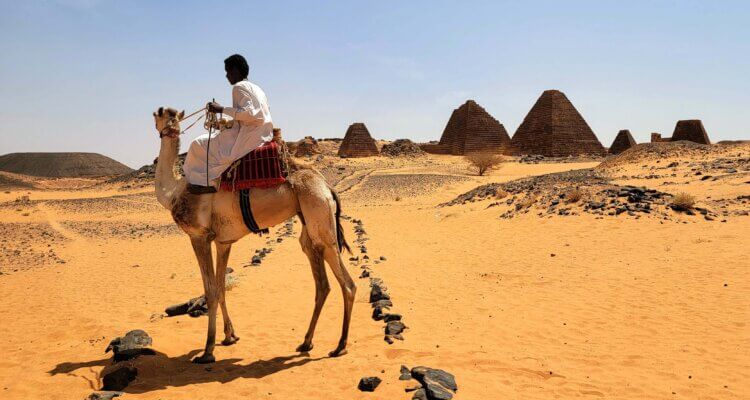Sudan is a country that is often overlooked by tourists, but it is a place that is full of history and culture. One of the most famous attractions are the pyramids of Sudan – the Meroe pyramids, which are located about 100 kilometers (62 miles) north of Khartoum. These are the largest pyramids of Sudan, and they were built by the Kingdom of Kush, which existed from the 8th to the 4th centuries BC.
Did you know that Sudan has more pyramids than Egypt? Unfortunately most of these hidden treasures stand forgotten, vandalized and empty. Why? Well, Sudan tourism has been under “do not travel” advisories by most governments for a long period of time. Granted there are potential risks in traveling here.
However, we found a way to see these ancient tombs and other archaeological sites in Sudan while feeling quite safe. Read on to find out how we did it.
Sudan Travel – Getting here….
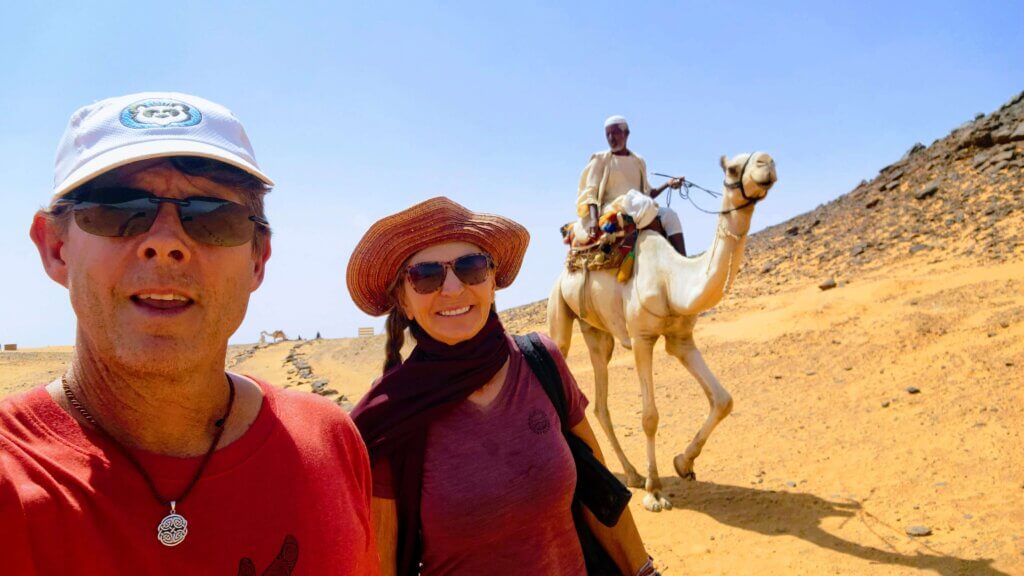
Getting to Sudan and seeing these treasures is not a cheap proposition. Many fellow travelers have done this independently and inexpensively. Meaning, no fixers, drivers or helpers. And they felt safe while couch surfing and busing/hitchhiking across the many sites of Sudan.
This was not our route. We wanted to be as safe as possible without breaking the bank. Here is how we did it.
Visa for Sudan Travel
Most countries require a visa to enter Sudan. We did all of our paperwork through the Acropole Hotel which made it quite easy and painless. They sent us paperwork for free to present at one embassy, then another.
Unfortunately we were not in Canada at the time and none of the embassies allowed us to process the visa out of home country. Therefore, we were not able to get the necessary documents that way. However, in case you are traveling through Cairo there is a way to get the paperwork prepared there quite quickly.
Ultimately, we paid the hotel $235 USD per person to pre-arrange all of the paperwork for us for the Visa on Arrival (VoA). In addition, we had to pay $100 USD upon arrival to the Khartoum airport. For USA passports it is $150.
Unfortunately, the Acropole Hotel was forced to close it’s doors due to this last war in Sudan. They have survived all the previous wars since 1952. It is a tragic end of an era on so many levels!
Arrival
Many flights arrive at odd hours – like ours did. However, the Acropole Hotel had someone meet us at the immigration point. She took care of every detail, making sure that we got our visa, which is a large sticker in the passport.
There is an added fee for this service and it is mandatory both ways (if you are also flying out of Khartoum). This does add to the price of the hotel ($37 per person each way). However, it does cover the drive to and from the hotel as well.
Once through passport control and baggage collection, we were driven the 10 minutes to the hotel.
Accommodations – Acropole Hotel
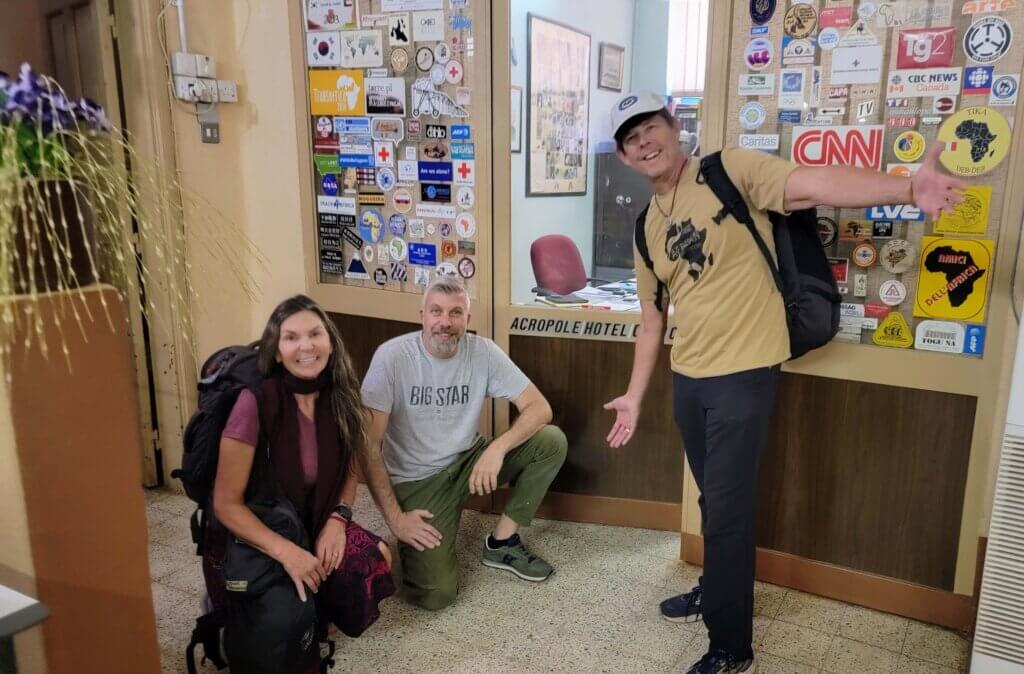
For us, the romance and lore of the Acropole Hotel was part of the draw to Khartoum and ultimately Sudan. It is the oldest hotel in Khartoum. If those walls could talk!
From archaeologists discovering the hidden treasures of Sudan, to the journalists of the BBC, CNN, CBC, etc., to the philanthropic and musical stars of the world like Bob Geldof – all have stayed at the Arcopole Hotel.
It is quite an unassuming 2 story building with Mediterranean blue shutters and terraces. There are simple rooms inside with a restaurant which features delicious food for breakfast, lunch and dinner – all buffet style.
The lobby is filled with comfortable seats which are closer to the office and most importantly the wifi router. This draws many of the hotel’s inhabitants to the area and conversations are easily started and stories shared.
The hotel was founded by the Sudanese by birth (Greek by descent) Pagoulatos family in 1952. And it has been family run ever since. The two remaining brothers: Thanasis and Mike, and now one of their son’s Pav Los run the business of the hotel flawlessly. They navigate the difficult Sudanese bureaucracy with ease and a Zen like spirit.
The Meroe Pyramids – The Pyramids of Sudan
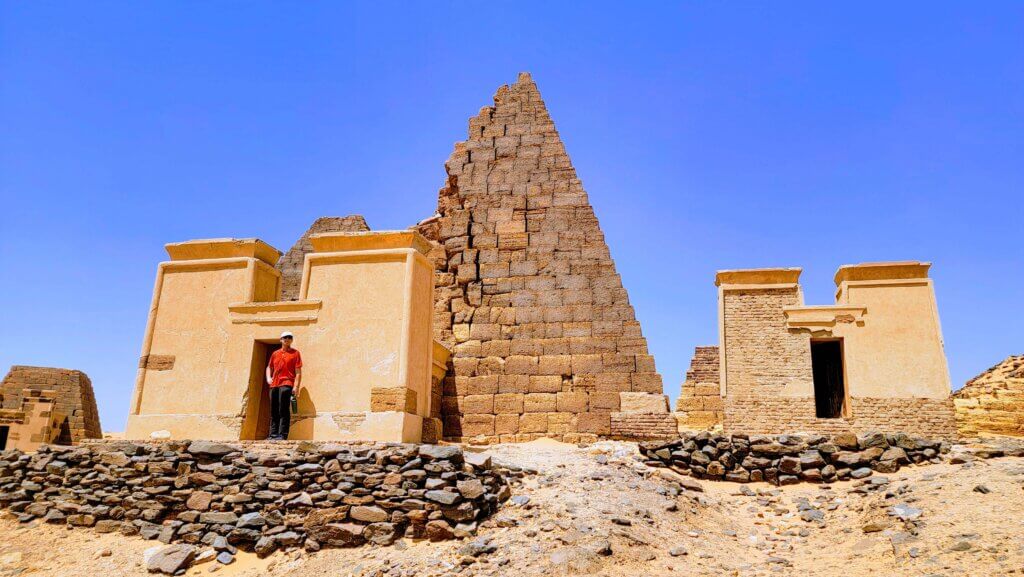
The Sites of Meroë are located on the west bank of the Nile River and are a UNESCO World Heritage Site. They are considered one of the most important archaeological sites in Africa.
Yet, when we were there, we were the only ones. We literally had the place to ourselves. On one hand we were grateful on the other, we felt so sad for the people and the antiquities – being abjectly forgotten.
These tombs were built by the Kushites, an ancient African civilization that ruled the area for over 3000 years. The Kushite tombs are smaller than their Egyptian cousins, but they are still impressive structures.
They are made of sandstone and mudbrick, and are decorated with intricate carvings and inscriptions. Unfortunately, currently many of the carvings have been stolen, leaving pieces of the tomb walls empty. In addition, due to the neglect many of the pyramids are in a state of disrepair.
Meroe Pyramids – 3 Sites
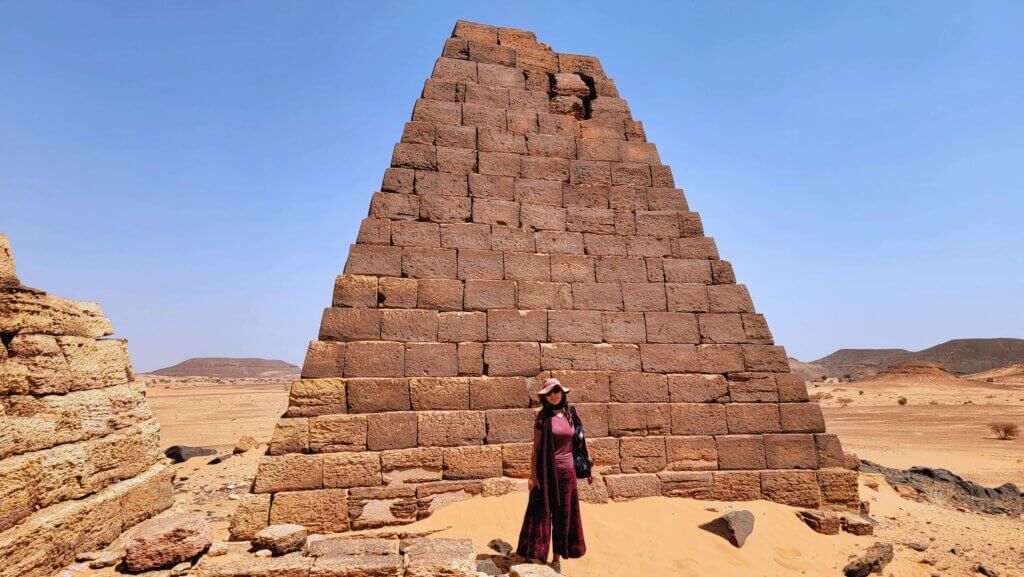
The three sites of Meroe are:
- Meroe is the main site, which includes the Royal City and the Northern and Southern Cemetery Fields. The Northern site is the most interesting and a must visit. The Southern one can be skipped as most of the tombs have been reduced to rubble.
- Musawwarat es-Sufra is a smaller site located about 15 kilometers from Meroe. It is home to a number of temples and other religious buildings.
- Naqa is another smaller site located about 20 kilometers from Meroe. It is home to a number of tombs and other ancient structures.
 Musawwarat es-Sufra
Musawwarat es-SufraA day trip from Khartoum can include the main site and either Musawwarat or Naqa. If you want to see all 3 sites, then an overnight in the area is necessary as driving in the dark is not recommended and Acropolis drivers will not do it.
PRO TIP: If you are only staying for the day, then try to see the Northern Meroe main site as well as Naqa.
Costs for the Tour
The cost of the driver, fuel and all the permits to get to the sites was $350. In addition, we were asked to pay $10 per person for each one of the 2 or 3 sites that we visited. The official cost is $20 per person per site.
The cost to stay overnight and see the third site at the break of dawn for the hotel room with dinner (double occupancy) was at the time of writing $300. In addition, we had to pay for one more day for the driver, fuel and car. This adds another $350 to the price tag.
Wrap Up – Sudan Travel
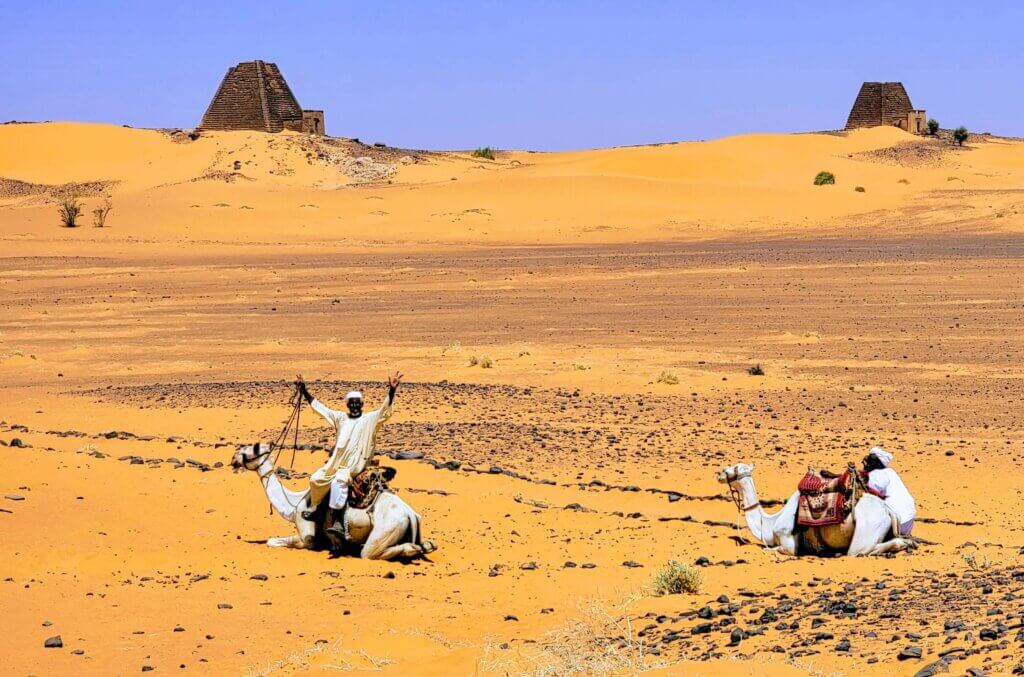
The tombs of Meroë are not the easiest place to visit, but in our minds well worth the effort.
We really enjoyed learning about the history of the Kushite civilization and seeing the beautiful scenery of the desert landscape of Sudan. Of course, the neglected tombs and antiquities did make us sad. Therefore, we hope many others will come to visit, forcing the government to start taking care of their forgotten yet priceless treasures.
Staying at the Acropole Hotel was part of the draw to this destination. So much history all wrapped into one interesting package. In addition, by staying at this hotel, every detail was taken care of and we felt incredibly safe throughout our trip.
We heard horror stories from other travelers (paying more than we did) about being stopped at check points for hours on end, while we were just waved through. That wasn’t coincidence or luck – that was experience and connections.
Have you been to this part of Sudan? Or perhaps you have been to the splintered country of South Sudan? What interests you most about these areas? We would love to hear from you!

